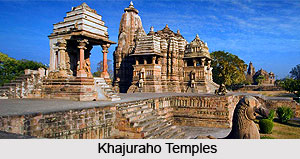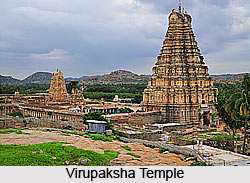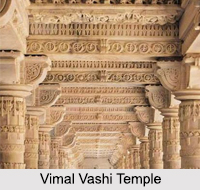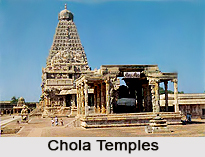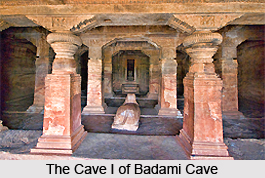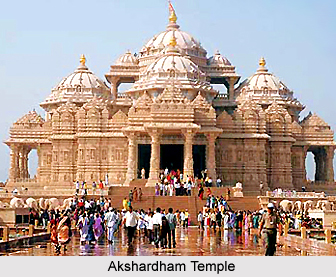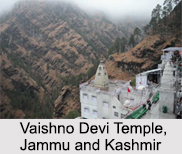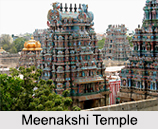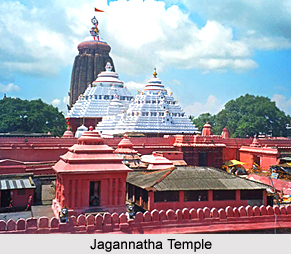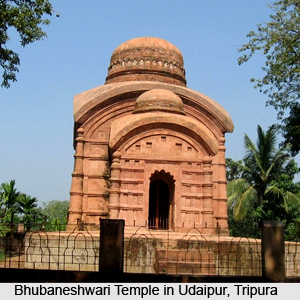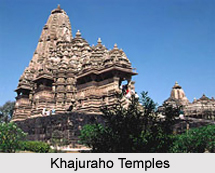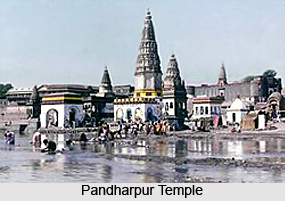 Pandharpur temples are dedicated to Lord Vishnu and Lord Krishna. Pandharpur is one of the most revered pilgrimage sites in Maharashtra. It is located 65 km west of Solapur district, on the banks of the Bhima River, which is also known as Chandrabhaga.
Pandharpur temples are dedicated to Lord Vishnu and Lord Krishna. Pandharpur is one of the most revered pilgrimage sites in Maharashtra. It is located 65 km west of Solapur district, on the banks of the Bhima River, which is also known as Chandrabhaga.
Also known by the other names, Pandurang, Vitthal or Pandhari, it is supposed to be The Supreme God of The Universe for all the Maharashtrians and an incarnation of Lord Shiva and Lord Vishnu. The word Vitthala is derived from the word Vishnu in Kannada language. Panduranga is a sanskritized form of Pandarga, the old name of Pandharpur. Pundalik, a saint was closely associated with this shrine, and hence this shrine is also known as Pundarika pura.
Vithoba Temple of Pandharpur
This temple is the epicentre to worship the deity Vithova, the local name Lord Krishna. The proper name of the temple is Shri Vitthala-Rukmini Mandir. This temple was founded in the 13th century. Vithova temple is a famous temple of Maharshtra. Before the year 1947the lower castes were not allowed to enter the temple. But now the temple doors arte open for all devotees from whatever community they belong. This temple is resided on the banks of Chandrabhaga which is believed to have strong power to clear all the sins.
An interesting tale related to the temple is that the temple`s first step called "Namdev Chi Payari". Namdev was an ardent worshipper of Vithova.
ISKCON Temple of Pandharpur
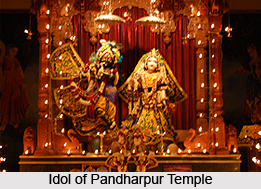 Iskcon temple of Pandharpur worships lord Vitthala, Lord Krishna himself. Vitthala at Pandharpur is derived mainly from the Indian Puranas and has been augmented by the contribution of the great Vaishnava saints of Maharashtra and Karnataka from the 13th through the 17th centuries like Dnyaneshwar, Namdev, Sant Eknath, Tukaram, Purandara Dasa, Vijaya Dasa, Gopala Dasa, Jagannatha Dasa, Chokhamela, Janabai and many others.
Iskcon temple of Pandharpur worships lord Vitthala, Lord Krishna himself. Vitthala at Pandharpur is derived mainly from the Indian Puranas and has been augmented by the contribution of the great Vaishnava saints of Maharashtra and Karnataka from the 13th through the 17th centuries like Dnyaneshwar, Namdev, Sant Eknath, Tukaram, Purandara Dasa, Vijaya Dasa, Gopala Dasa, Jagannatha Dasa, Chokhamela, Janabai and many others.
This temple, covering a vast area, has a total of six gates. The eastern entrance to this temple is known as the Namdev gate. The sanctum enshrines a standing image of Vithoba. In the temple of Vithoba, `Pad-Sparsha-Darshan`, is a special ceremony. Irrespective of caste any devotee can enter the sanctum sanctorum and can place his/ her head at the feet of Vitthal.
Although not religiously very crucial, certain daily rituals do form the routine of Bhaghwat Dharma, at Pandharpur. These signify the devotedness of the followers towards its deity. These rituals include Kakad Arti, Mahapuja Mahanaivedya, Poshakh Dhoop Arti, Padya Pooja, etc. All this is performed in main Vitthal temple. As one enters from Namdeo-Payri and comes out of the Westward Exit one crosses various other temples- as many as 25, in the same premises, like the Ganesh Mandir, Garud Mandir, Ekmukh Dattatraya Mandir, Satyabhama Mandir, Kanhopatra Mandir to name a few.
At Pandharpur, every Wednesday is regarded as an auspicious day and Ekadashi- auspicious day of the month. Pandharpur hosts four "Yatras" in a year. Out of which "Aashadhi Yatra", Kartiki, Magh and Chaitra Ekadashi`s are celebrated yearly and it thus, attracts the most pilgrims to Pandharpur. Out of these, 1st two attract a crowd of about 8 to 10 lakhs. Here, the palanquins (Palkhis) of various saints from different locations come together at Wakhri, 5 kilometres away from Pandharpur. And then, the pilgrims take holy bath in river Bhima and usually stand in queues 3km long in order to take "Darshana" of Lord Vitthala.
Apart from these, the temple premise also celebrates Gudhi Padawa, Ram Navami, Dasehara and Diwali festivals. Even saint Namdev, the 13th century saint was closely associated with this temple. Copper plate inscriptions of the Rashtrakootas place this shrine in the 6th century BC. There is also a shrine to Pundalik at Pandharpur. That is why, Pandharpur is known, the greatest centre of attraction for the masses.
